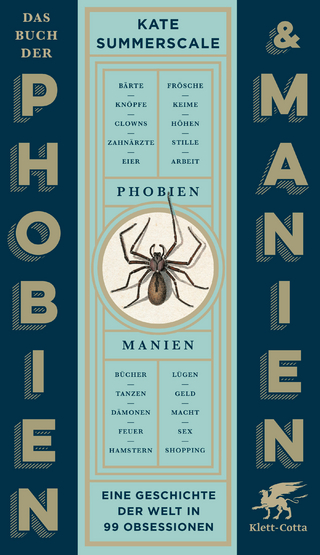
Pale Rider
The Spanish Flu of 1918 and How it Changed the World
Seiten
2018
Vintage (Verlag)
978-1-78470-240-3 (ISBN)
Vintage (Verlag)
978-1-78470-240-3 (ISBN)
Read the devastating story of the Spanish flu - the twentieth century's greatest killer – and discover what it can teach us about the current Covid-19 pandemic.
'Both a saga of tragedies and a detective story... Pale Rider is not just an excavation but a reimagining of the past' Guardian
With a death toll of between 50 and 100 million people and a global reach, the Spanish flu of 1918–1920 was the greatest human disaster, not only of the twentieth century, but possibly in all of recorded history. And yet, in our popular conception it exists largely as a footnote to World War I.
In Pale Rider, Laura Spinney recounts the story of an overlooked pandemic, tracing it from Alaska to Brazil, from Persia to Spain, and from South Africa to Odessa. She shows how the pandemic was shaped by the interaction of a virus and the humans it encountered; and how this devastating natural experiment put both the ingenuity and the vulnerability of humans to the test.
Laura Spinney demonstrates that the Spanish flu was as significant – if not more so – as two world wars in shaping the modern world; in disrupting, and often permanently altering, global politics, race relations, family structures, and thinking across medicine, religion and the arts.
‘Weaves together global history and medical science to great effect ... Riveting.’ Sunday Times
'Both a saga of tragedies and a detective story... Pale Rider is not just an excavation but a reimagining of the past' Guardian
With a death toll of between 50 and 100 million people and a global reach, the Spanish flu of 1918–1920 was the greatest human disaster, not only of the twentieth century, but possibly in all of recorded history. And yet, in our popular conception it exists largely as a footnote to World War I.
In Pale Rider, Laura Spinney recounts the story of an overlooked pandemic, tracing it from Alaska to Brazil, from Persia to Spain, and from South Africa to Odessa. She shows how the pandemic was shaped by the interaction of a virus and the humans it encountered; and how this devastating natural experiment put both the ingenuity and the vulnerability of humans to the test.
Laura Spinney demonstrates that the Spanish flu was as significant – if not more so – as two world wars in shaping the modern world; in disrupting, and often permanently altering, global politics, race relations, family structures, and thinking across medicine, religion and the arts.
‘Weaves together global history and medical science to great effect ... Riveting.’ Sunday Times
Laura Spinney is a science journalist and a literary novelist. She is the author of two novels and her writing on science has appeared in National Geographic, Nature, The Economist and The Telegraph, among others. Born in the UK, she has also lived in France and Switzerland.
| Erscheinungsdatum | 25.05.2018 |
|---|---|
| Verlagsort | London |
| Sprache | englisch |
| Maße | 129 x 198 mm |
| Gewicht | 303 g |
| Themenwelt | Geschichte ► Teilgebiete der Geschichte ► Kulturgeschichte |
| Studium ► Querschnittsbereiche ► Geschichte / Ethik der Medizin | |
| Studium ► Querschnittsbereiche ► Infektiologie / Immunologie | |
| Sozialwissenschaften ► Soziologie | |
| ISBN-10 | 1-78470-240-4 / 1784702404 |
| ISBN-13 | 978-1-78470-240-3 / 9781784702403 |
| Zustand | Neuware |
| Haben Sie eine Frage zum Produkt? |
Mehr entdecken
aus dem Bereich
aus dem Bereich
der stille Abschied vom bäuerlichen Leben in Deutschland
Buch | Hardcover (2023)
C.H.Beck (Verlag)
23,00 €
vom Mittelalter bis zur Gegenwart
Buch | Softcover (2024)
C.H.Beck (Verlag)
12,00 €
eine Geschichte der Welt in 99 Obsessionen
Buch | Hardcover (2023)
Klett-Cotta (Verlag)
22,00 €


